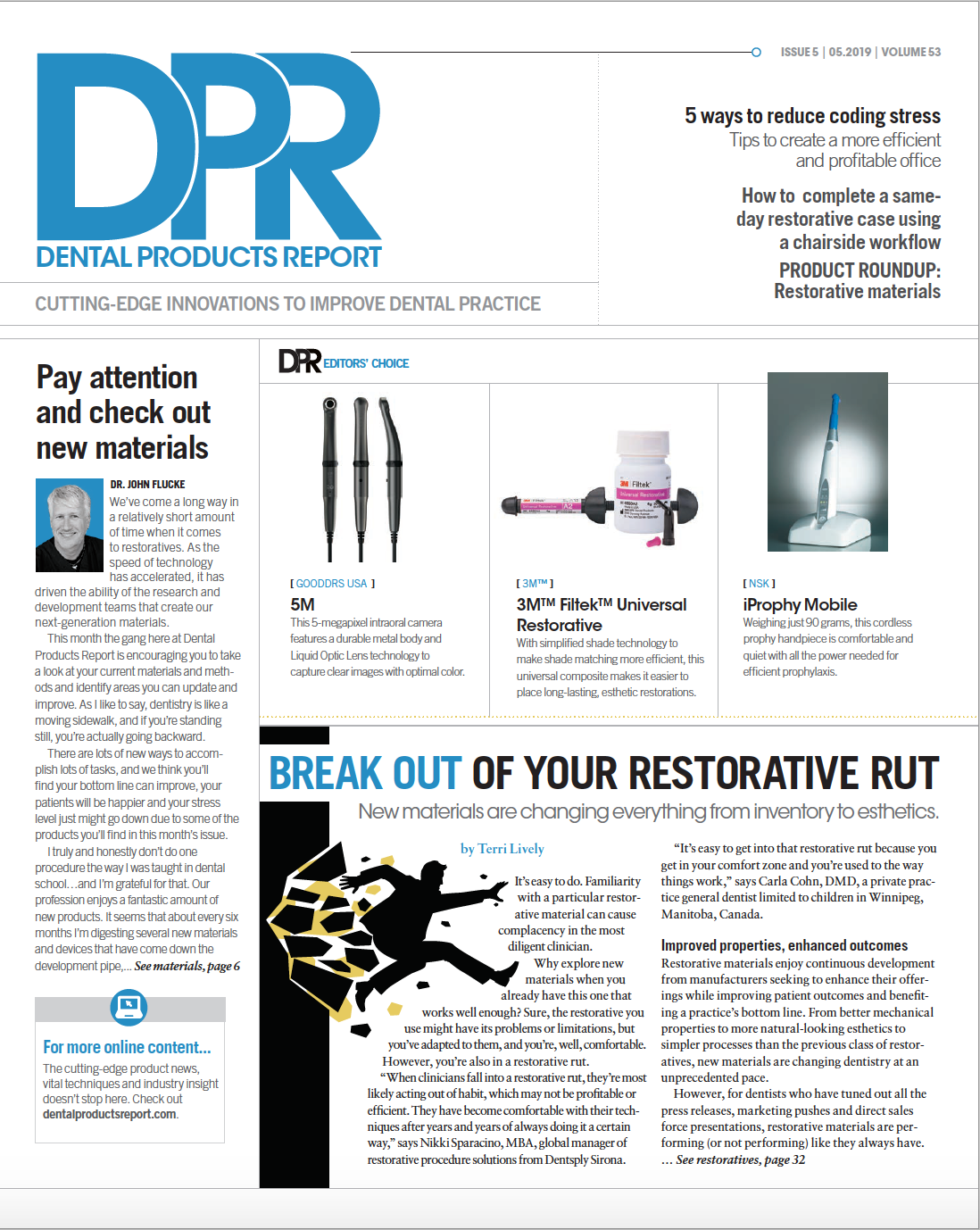5 ways to reduce coding stress
Follow these best practices to create a more efficient and profitable office.

From seeing patients to writing treatment plans to keeping up with the latest innovations and technology, dentists are very busy people.
In addition, dentists are running a small business and all it entails, including management and continued staff training.
Many practices have billing systems that file third-party claims. For many, there could be a better way. These “better ways” or best practices could help dental team members to code more effectively, thus increasing claim approvals and leading to more efficient collections. These five best practices in coding can also reduce stress.
1. Use the most accurate code
As professionals, our coding obligation is to use the most accurate code to describe the procedure performed. Coding for what you do is a fundamental rule for all coding.
Related reading: Why you should code for what you do
Many practices have experienced a third-party payer remapping (or down coding) their submissions. Carriers don’t automatically change a dentist’s submitted procedure code to a less complex or lower-cost code.
A submitted code may be changed when a professional review of the submitted charges and supporting clinical information such as X-rays, photographs, periodontal charting, narratives and treatment notes indicate the original coding may have been inappropriate
This leads practices to think codes can be used based on a plan’s coverage. Treatment plans must be developed according to professional standards, not according to provisions of an insurance contract.
This has been discussed many times in regard to the practice of alternating codes D1110 and D4910. Mark Rubin, JD, legal counsel for the American Dental Association, stated in 2006: “Knowingly alternating the D1110 and D4910 to maximize insurance benefits would constitute fraud. We must code for the procedure being performed. By doing otherwise, the attorney general could make a convincing case for prosecution.”

Treatment should always be based on clinical need and not on covered services.
Most dental professionals are caring, ethical and honest and would never knowingly perpetrate any type of dental fraud, abuse, or scam. Patients, and possibly others you work with, may ask if codes can be alternated, if treatment dates can be changed, or if there can be requests made to increase dental benefit coverage.
This is more than an ethical dilemma. We’ve worked too long and hard to complete our education and licensure to allow fraud and abuse to jeopardize our success. If there’s one thing that creates stress, it’s the thought of fraud. Reduce stress by using the most accurate code.
2. Perform evidence-based dentistry
The ADA has developed the Center for Evidence-Based Dentistry to assist dentists with arriving at the best treatment decision based on the most up-to-date science.
More from the author: 4 benefits of using gingival inflammation code D4346
In order to achieve this, the ADA selects a panel of experts under the guidance of its Council on Scientific Affairs to critically appraise, summarize and interpret the clinical relevance of a body of evidence.
These practical recommendations before clinical practice guidelines of recommendations for patient treatment are based on the scientific assessment of therapeutic options.
Third-party carriers include these clinical practice guidelines when determining coverage. For example, the “Professionally-applied and Prescription-strength, Home-use Topical Fluoride Agents for Caries Prevention Clinical Practice Guideline (2013)” made evidence-based recommendations after a thorough systematic review of current scientific evidence.
When treatment recommendations are based on documented, well-supported evidence, stress is reduced by knowing the science behind what’s done.
Continue to page two to read more...
3. Learn the AAP classification of Periodontal and Peri-Implant Diseases and Conditions 2017
Most periodontal coding flowcharts follow the same pattern. Care is for new patients, yet periodontal disease isn’t dependent on when a patient enters our practice. Further, most flowcharts divide care into treatment for periodontitis bone loss disease with little mention of gingival disease. This is also too simplistic for the large variety of patient conditions.
Most practices are still using these treatment case types:
- Type I: Gingival disease
- Type II: Mild periodontal disease
- Type III: Moderate periodontal disease
- Type IV: Advanced periodontal disease
These treatment types were created by the AAP for the purpose of third-party insurance payment. These shouldn’t be confused with disease classifications.
Related reading: 7 simple steps to jumpstart diagnostic coding in your office
On June 21, 2018, the American Academy of Periodontology (AAP) published its “Classification of Periodontal and Peri-Implant Diseases and Conditions 2017.” This document includes a staging and grading system for periodontitis and classifications of peri-implant disease. And for the first time, there aren’t only classifications of disease, but there are classifications for health.
These health and disease classifications are the basis of the dental-medical necessity for treatment. To reduce stress, take a course on these new classifications; it’s a key part of the next best practice.
4. Document your diagnosis
Dentists and all clinicians must become more involved in coding. Most often, coding is left to business professionals. In a fast-moving world, this can no longer be the case.
A major opportunity is made available by using diagnostic codes. Diagnostic information may affect how a claim is paid when specific dental procedures minimize the risk associated with the patient’s oral and systemic health condition.
This is a best practice in action and moves professionals in the direction that will be required in the near future. The diagnosis codes reported on the claim with the service rendered is to justify to a payer why a service was performed. The diagnosis reported can determine the medical necessity of the procedure.
This isn’t limited to medical cross-coding. Both the ADA claim forms and the HIPAA standard electronic claim transactions are able to report up to four diagnosis codes per dental procedure in Box 34A.
Routinely documenting the diagnosis and information supporting the diagnosis can significantly reduce rejections and the request for more information, thus reducing stress.
5. Commit to lifelong learning and training
CDT codes change for many reasons, including the introduction of technology, materials, or techniques that have led to new procedures. Codes are updated annually with new, revised and deleted codes.
Trending article: How to save money by preventing sensitivity
Practice management software is also updated annually but may not include the entire CDT code entries. This could lead to mistakes, errors in understanding and inappropriate coding.
Therefore, ongoing, annual training is needed. This shouldn’t be limited to those responsible for coding. Annual training and updates are necessary for everyone in the practice, particularly the dentist. Learning together creates communication and reduces stress.
The world moves much faster than it did just five to 10 years ago, and there’s more competition than ever. It’s easy to fall behind. Coding competency is extremely important in the revenue cycle. Avoiding all pain points isn’t possible, but it can be reduced. Coding will continue to evolve. Best practices will continue to change. Continuous learning is key to stress reduction and success

How Dentists Can Help Patients Navigate Unforeseen Dental Care
December 12th 2024Practices must equip patients with treatment information and discuss potential financing options before unexpected dental treatments become too big of an obstacle and to help them avoid the risk of more costly and invasive procedures in the future.